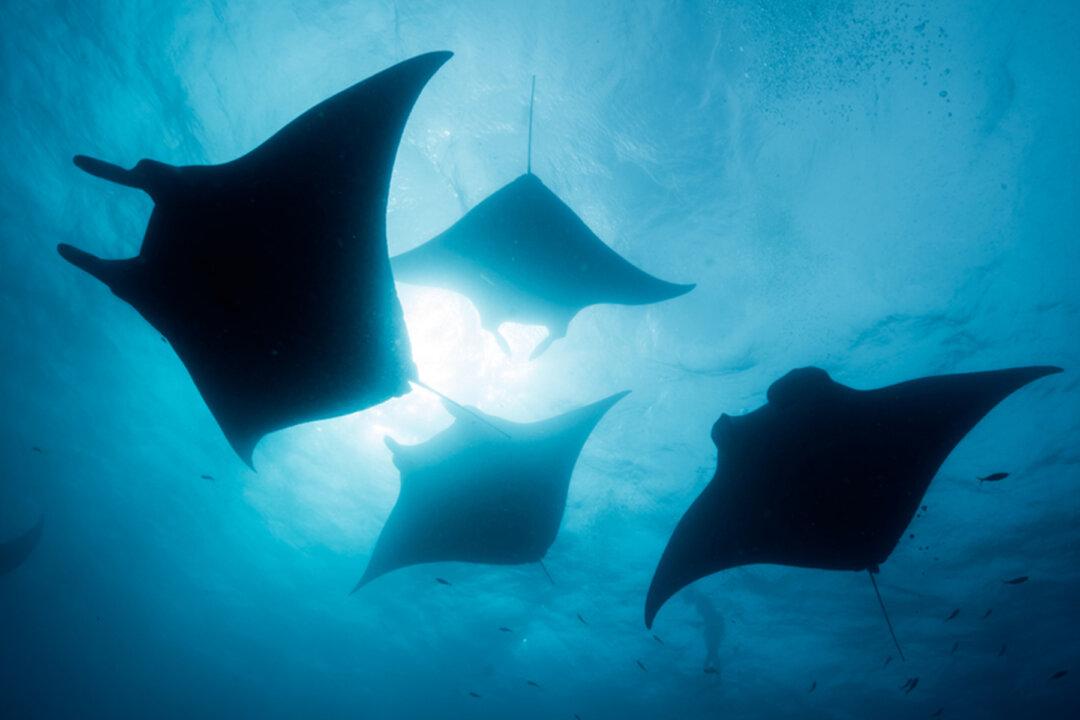“Inspector Clouseau,” the only known pink-hued manta ray in existence, has been pictured swimming in the shallow waters near Australia’s southern Great Barrier Reef.
While swimming, photographer Kristian Laine snapped the 11-foot male ray close up in January 2020. Laine, surprised by the ray’s unique coloring, initially thought that his camera equipment had malfunctioned.




